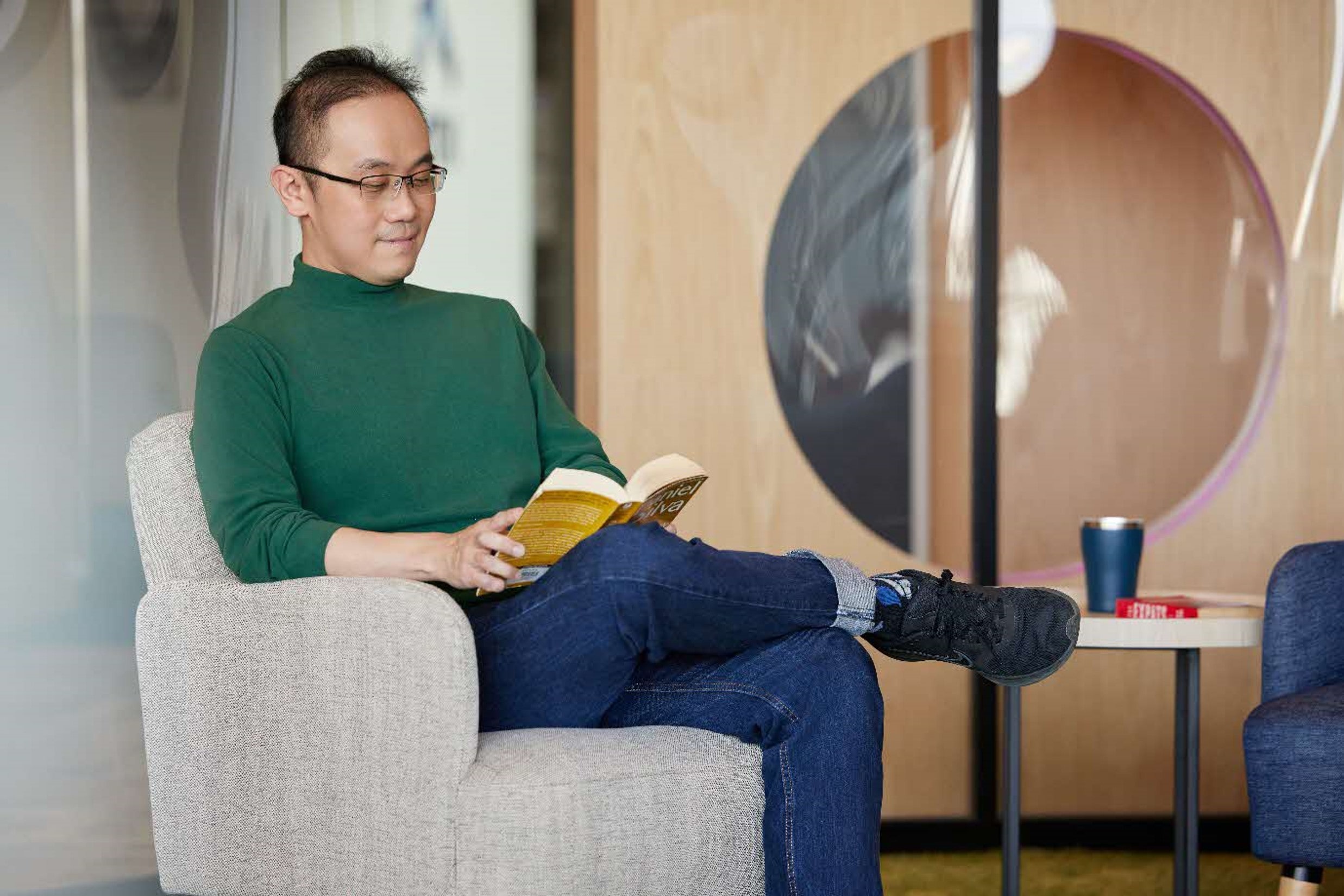Just by looking at a crowd of people, can you tell who among them is lying and who is telling the truth? Kee Ein Cern can. But how?
The Deputy Director (Profiling) at HTX’s Biometrics & Profiling (B&P) Centre of Expertise (CoE) is no fortune teller. Instead, his “secret weapon” is technology.
Ein Cern and team have been researching what are called Tell-Tale Indicators (TTIs). These are behavioural cues that may be indicative of one’s ill intentions.
The first prototype, developed in the lab environment, is capable of detecting certain signs of anxiety and nervousness. When it finally launches at checkpoints, those with malicious intent best beware! It will become much easier for Home Team officers to notice their suspicious behaviour and intervene.
The Profiling group is also conducting experiments in a bid to build the next generation lie detector. This employs an array of sensors: one that picks up on facial colour changes caused by heart rate and blood flow, another that analyses one’s voice, as well as an eye-tracker that detects pupil dilation, to determine if someone is lying.
Working on such tech of the future is tough with no blueprints to follow. To succeed, Ein Cern believes it takes foresight. This, he explains, is the ability to anticipate what the future needs, to predict the obstacles one might meet, and to creatively brainstorm how to overcome them.
“Foresight gives us a glimpse of future possibilities, and all the elements that might help or challenge these possibilities. We still need to do trials, testing and lots of research to materialise our ideas—but foresight forms our guiding principle. Only with it, are we able to design and develop novel technologies,” he emphasises.
Gathering inspiration for the future
Asked how he had the foresight to develop such technology, Ein Cern explains that he enjoys researching and is very “plugged in” to the latest lie detector technology trends. “I get inspiration from reading,” he declares, adding that his idea for credibility assessment came after reading a research paper on behavioural traits to determine one’s truthfulness.
That said, one might argue that Ein Cern’s idea bank of how to bust crimes has been building for years.
After all, Ein Cern is a big fan of the Hardy Boys and spent his childhood engrossed in stories of how the amateur sleuths solved crimes. Today, his latest fiction read is about an agent cracking down on terrorist syndicates—it keeps to the theme of deciphering clues and catching criminals.
With such a strong base of both facts and fiction inspiring him, it’s no wonder he’s wired to see opportunities in the field no matter where he looks!
 (Photo: HTX)
(Photo: HTX)
Ideas grounded in real-world operations
But how does Ein Cern know which opportunities are worth acting upon and pursuing?
By talking to people on the ground and understanding the operational challenges or ‘wicked problems’. “You need to immerse in the Home Team environment, so your ideas are aligned with how the ground forces work. Otherwise, you have nothing more than just imagination,” he advises.
Case in point: He knew that his idea for lie detection was feasible simply because he had spent time with the Immigration & Checkpoints Authority (ICA) and the Singapore Police Force (SPF). He saw how they operated, understood what they struggled with—and as a result, could apply his knowledge to improve their operations.
It’s also important not to get caught up with the latest shiny tools, that you forget the problem you want to solve, Ein Cern adds. He cites AI as an example. As it became popular to use the technology to analyse facial expressions, many people were eager to apply it to their work.
But Ein Cern recalled how in one situation, the vendors pitched an AI solution that presented the results of the analysis in the form of a graph. “This is not what the psychologists at the Singapore Civil Defence Force (SCDF) need for their work,” he states. It was good technology, but not put to good use.
So if you’re looking to develop technology of the future and revolutionise homeland security, this is his advice: “Make sure you can bring technology into operations, rather than try to fit operations into technology that exists.”